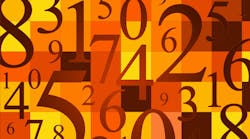The age-old question: Dental CDT code D4910 versus code D1110
I recently received this common dental coding question.
I’m confused about the correct code for a perio patient who’s been through scaling and root planing (SRP) and who returns for perio maintenance. I’ve always been told, “Once perio, always perio,” but someone pointed out to me that’s not the case. They referred me to clinical coding scenario number 11 in the CDT 2023 Coding Companion. On page 83 it states, “If the dentist determines that the patient’s periodontal health can be augmented with periodic routine prophylaxis procedures … then this service should be performed and reported as D1110 ...” What’s correct?
Answer to this dental coding dilemma
People have been asking this question for decades, and even some insurance carriers accept and reimburse for the alternating codes. This means less money for the dentist and more money for the carriers.
It’s important to understand some history of the codes. In 1996, HIPAA mandated that the American Dental Association be the definer of the dental procedure codes. Since 2005, the descriptor for D4910, periodontal maintenance, has been, “This procedure is instituted following periodontal therapy and continues at varying intervals, determined by the clinical evaluation of the dentist, for the life of the dentition or any implant replacements. It includes removal of the bacterial plaque and calculus from supragingival and subgingival regions, site specific scaling and root planing where indicated, and polishing the teeth. If new or recurring periodontal disease appears, additional diagnosis and treatment procedures must be considered.” (This is on page 35 of the CDT 2023 Coding Companion.) The qualifier “for the life of the dentition” was added to the original descriptor in 2002 when it was recognized that periodontal disease was a lifelong condition that needed to be managed, not cured.
You might also be interested in
2023 CDT code updates, and how to appeal a claim denial for SRP
What the AAP has to say
In addition, the American Academy of Periodontology does not support providing a D1110 service to a patient who has received nonsurgical periodontal therapy. This was demonstrated in their response in their “Frequently Asked Questions from the AAP 2018 Classifications.” The question asked was, “What is meant by the consensus statement, ‘A periodontitis patient is a periodontitis patient for life?’”
The AAP’s response was, "A patient who has periodontitis remains at risk for further periodontal destruction even with treatment. It is important to define a periodontitis patient as an 'at-risk' individual because this patient requires a more intensive level of maintenance and evaluation than a patient who has not had periodontitis. Thus, a periodontitis patient who has been treated and is now stable should not return to a level of evaluation and maintenance identical to a patient who has never had periodontitis (i.e., annual or semiannual exam/prophylaxis)."
This explanation makes sense to me, especially considering the research related to the pathogenic bacteria responsible for periodontal conditions and the host response to those pathogens. When talking to attorneys about this, it has been my experience that the AAP’s recommendations will far outweigh whatever the ADA offers as an interpretation since the AAP’s specialty is treating periodontal conditions.
Why the ADA continues to promote that a patient can suddenly be a candidate for an adult prophylaxis following SRP is odd since this goes totally against the provisions of their own descriptor! It causes so much confusion for patients. Having worked for a periodontist for many years, I was often asked by patients, who alternate visits with their general dentist, “Why does it cost more to have my teeth cleaned here when it feels the same as when my hygienist does it at Dr. Smith’s?”
That’s a good question! I believe dentists are worried the patient will not want to pay the additional cost (copays and deductibles versus 100% coverage for D1110), so they’re willing to take a loss in production. In today’s economic struggles, why do this?
Hygienists and dentists need to convey to patients that the periodontal maintenance procedure may feel the same, but they’re providing so much more intangible knowledge and skills as provided in the descriptor. Hygienists are not just “cleaning teeth”; we’re helping patients to manage their chronic, and hopefully stable, periodontal condition. Plus, it takes additional clinical skills to instrument teeth, root surfaces, implants, and more so as not to damage any of the periodontal structures while doing it. This is hygienists’ specialty!
Editor's note: This article appeared in the November-December 2023 print edition of RDH magazine. Dental hygienists in North America are eligible for a complimentary print subscription. Sign up here.
Kathy S. Forbes, BS, RDH, has been a dental hygienist, educator, speaker, author, consultant, seminar, and study club leader for more than 40 years. She holds a license with the ADA for Current Dental Terminology, which allows her to provide the most up-to-date understanding of current procedure codes. Kathy currently serves as a director for the Dental Codeology Consortium, reviewing and developing procedure codes relevant to dental hygiene practice that are presented to the Code Maintenance Committee of the American Dental Association in March each year.







